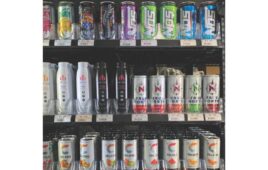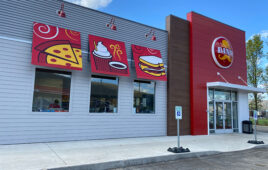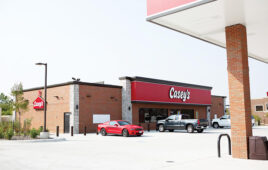A well-run program can help customers start the day with a smile and bring them back again and again. It can also anchor a breakfast program, serve as a profit center and prove a key point of differentiation—assuming it is done right.
Doing it right means starting with top-quality products, having all the condiments and flavor options consumers demand, pricing it right, carefully maintaining the station, making the beverages convenient for shoppers to select and pay for and offering attractive promotions.
While it requires a lot of hard work, the payoff can be substantial. According to Mintel, overall coffee sales in the U.S. in 2013 surged 11.4% to $11.7 billion. Single cup sales at retail jumped 213% to $3.1 billion. In other words, customers are buying coffee in all sizes and all flavors.
Getting it Right
The first and most basic of consideration—floor space—can help coffee programs grow, according to Steven Montgomery, principal of b2b Solutions LLC in Lake Forest, Ill.
“The biggest issue is that retailers don’t build coffee space for volume. Coffee is a very time-intense business. It all happens in relatively short period of time,” Montgomery said. Too little attention to how customers use the station can have them crossing each other during the purchase process, which will turn some off, create confusion and slow checkout.
“I think the key is the same as all foodservice programs: freshness, quality and price value,” said Jerry Weiner, vice president of food service for Rutter’s Farm Stores in York, Pa. “We will never be able to create the experience of a Starbucks. However, we certainly can deliver equal quality products and for a lower retail. It doesn’t need to be really cheap, but it needs to be less expensive and high quality, which will get you price value.”
Weiner approaches his sales strategy accordingly. “I look at the competition and try to be slightly under Starbucks and in line with other c-store competitors and other retailers, such as Dunkin’ Donuts, in my market.”
Coffee at c-stores has evolved to the point that most leading chains are now offering customers choices and ways to customize their coffee in a pleasant retail environment, said John Bennett, retail operations manager for Robinson Oil Corp., which operates 34 Rotten Robbie stores in Santa Clara, Calif. “Pricing remains a key to success. If it’s too high they will go elsewhere, if it’s too low, you sacrifice quality.”
Another key for success is not overcomplicating the offering, said John Zikias, chief operating officer for Holmes Oil Co. in Chapel Hill, N.C. “Whether you do your own roast or get something that comes from a supplier, you’ve got to start with a great roast.” The other often-overlooked component—perhaps the most easily overlooked of all—is water.
Indeed, water filters used for coffee need to take some of the lime out, which cannot be done with fountain systems. Holmes Oil runs its water through a scale inhibitor before brewing at its 24 Cruizers c-stores. “You can’t take a lot of the minerals out when doing fountain drinks because then it doesn’t carbonate properly,” Zikias explained. “So we put it through the main filter system, then put it through the scale inhibitor to take out the lime and other mineral deposits.” ◆
Cup Sales Surge
The single-cup coffee category continues to be popular with consumers. As a result, competition is increasing between premium brands and restaurants with signature brews to enter the space and capitalize on the growing segment.
As the single-cup market grows, roasted coffee sales are actually falling, according to a recent survey from research company Mintel Group. U.S. coffee sales are expected to hit $11.7 billion in 2013, up 11.4% from 2012. Although single-cup coffee sales still account for half the volume of regular coffee, they’re forecast to rise by 213% to an estimated $3.1 billion this year from 2011. Roasted coffee, meanwhile, is projected to fall 2.7% to $6.1 billion over the same period. Single-cup has eroded the roasted coffee segment’s market share to 52% of the estimated sales in 2013 from 67% in 2011.
Coffee Snapshot
2013* Overall Coffee Sales: $11.7 billion
One-Year Increase: 11.4%
Single-cup sales: $3.1 billion
Increase: 213%
* Mintel forecast for 2013




